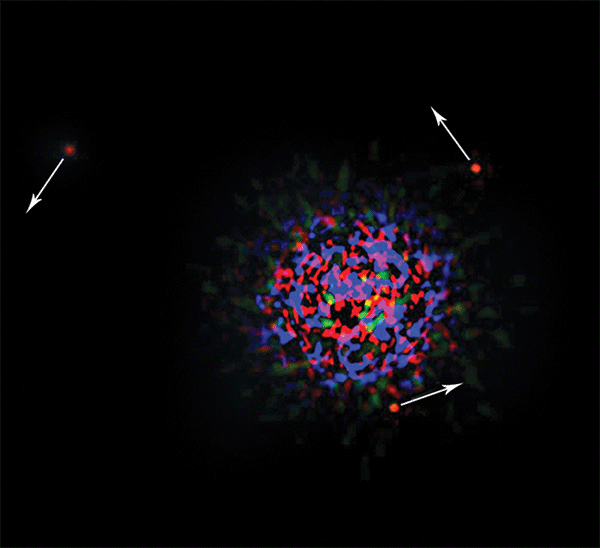First “Earth-Cousin” Found by Kepler Space Telescope
Thursday, May 1st, 2014May 1, 2014
The first Earthlike planet orbiting in the “Goldilocks zone” of a star other than the sun has been found by scientists analyzing data from the Kepler space telescope. The Goldilocks zone is the region around a star in which liquid water can exist. That is, the planet, called Kepler-186f, is not too hot to cause water to evaporate or too cold to cause it to freeze. Scientists believe the most likely place to find life as we know it is on planets or moons that can support liquid water.
“Being in the habitable zone does not mean we know this planet is habitable,” commented Thomas Barclay, a research scientist at the Bay Area Environmental Research Institute at Ames, and co-author of the paper. “The temperature on the planet is strongly dependent on what kind of atmosphere the planet has. Kepler-186f can be thought of as an Earth-cousin rather than an Earth-twin. It has many properties that resemble Earth.”
The newly discovered extrasolar planet is just 10 percent larger than Earth. It orbits a type of star called a red dwarf. Smaller and cooler than the sun, red dwarfs are also the most abundant type of star in our galaxy, the Milky Way. The star, called Kepler-186, is about half the size and mass of the sun. It is about 500 light-years from Earth in the constellation Cygnus. Four other planets orbit Kepler-186.

Extrasolar planets orbit stars other than the sun. This infrared image of the star HR 8799 and its three orbiting planets was taken in 2008. The arrows indicate the directions of the planets’ orbits. (C. Marois et. al/NCR Canada)
Since the first planets outside the solar system were discovered in the 1990′s, scientists have hoped to find a planet that could support life. Because of the limited ability of the instruments used to search for extrasolar planets, almost all of the early planets discovered were very large and orbited very close to their host star. However, Kepler, which was constructed specifically to hunt for exoplanets, expanded the number of known extrasolar planets from just a few hundred to thousands.
To find extrasolar planets, Kepler examined some 150,000 stars in one small section of the galaxy using a technique called the transit method. Away from the distorting interference of Earth’s atmosphere, almost all stars shine at a consistent brightness. But a planet or other body passing in front of star will block some of the star’s light. Kepler looked for this dip in brightness. Unlike most of the first exoplanets discovered, the planets spotted by Kepler are of many sizes and distances from their home star.
Additional World Book articles:
- Kepler, Johannes
- Life (The search for life on other planets)
- In Search of Other Worlds (a Special Report)



